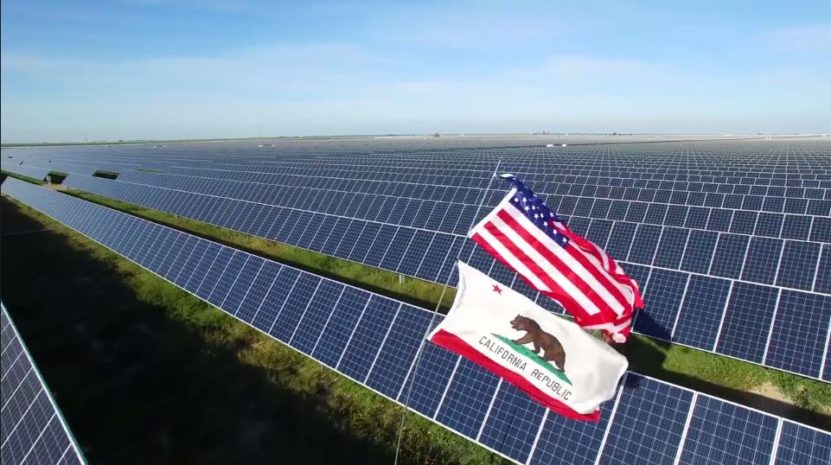Data for the first half of 2018 shows solar representing more than 10% of in-state electricity generation in a fifth U.S. state – further evidence the energy transition is under way.
The August 2018 edition of Electric Power Monthly, a publication by the U.S. Department of Energy’s Energy Information Administration (EIA) shows electricity generation from solar in Massachusetts growing 34% year-on-year to 1.64 TWh in the first six months of the year, and representing 12% of the state’s generation.
There is an irony to the development, given Massachusetts is still waiting on the final form of the SMART solar incentive policy, and that commercial, industrial and large scale solar markets are all on hold in some parts of the state, due to caps on net metering.
Massachusetts joins four other states where solar represented more than 10% of electricity generation: California, Hawaii, Nevada and Vermont, as the second New England state to achieve the landmark. Solar generation increased 24% year-on-year in Vermont, and also represents 12% of generation.
In New England, the high levels of rooftop solar caused net daytime power demand to sometimes fall below evening demand this summer, and are also saving substantial sums for ratepayers during heatwaves.
California flies the solar flag
But both states are still far behind California, where solar generation grew 20% in the first half, and represented more than 19% of in-state generation. What all three states have in common is they are net importers of electricity, so the portion of electricity demand met with in-state solar is lower than the portion of in-state generation solar represents.
Popular content
pv magazine has previously reported on solar as a portion of demand met; however the figure is inherently speculative as line losses must be estimated. As a result, we have moved to reporting on solar as a percentage of total electricity generation. While using the metric of demand met would put Massachusetts and Vermont below 10%, PV is still easily meeting more than 15% of demand in California.
California's deployment gives the lie to claims solar will stall when it reaches a certain portion of electricity generation.
Hawaii and Nevada round out the 10%-plus club, with solar representing 12% and 13% of generation, respectively. PV generation grew only 8% year-on-year in Hawaii – with installations plummeting as a result of policies implemented after regulators abruptly shut off net metering – but grew 20% in Nevada.
Overall, solar in the United States grew 28% to reach 48 TWh – 2.4% of electricity generation. Solar and wind represented a fraction less than 10% of generation, with wind output growing 11% and expanding beyond traditional strongholds in Texas and the Plains States to more Midwestern states, as well as Oregon and New Mexico.

Along with this, coal generation fell 6% year-on-year and capacity numbers tell an even starker story. Nearly 10 GW of coal was retired in the first six months of 2018, part of 17 GW that has gone offline in the last 12 months.
This content is protected by copyright and may not be reused. If you want to cooperate with us and would like to reuse some of our content, please contact: editors@pv-magazine.com.


7 comments
By submitting this form you agree to pv magazine using your data for the purposes of publishing your comment.
Your personal data will only be disclosed or otherwise transmitted to third parties for the purposes of spam filtering or if this is necessary for technical maintenance of the website. Any other transfer to third parties will not take place unless this is justified on the basis of applicable data protection regulations or if pv magazine is legally obliged to do so.
You may revoke this consent at any time with effect for the future, in which case your personal data will be deleted immediately. Otherwise, your data will be deleted if pv magazine has processed your request or the purpose of data storage is fulfilled.
Further information on data privacy can be found in our Data Protection Policy.